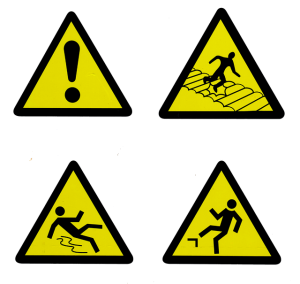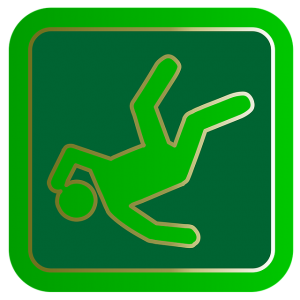
The Impact of Workplace Accidents & Occupational Diseases
Every occupation has inherent hazards which, if manifested, can give rise to poor safety and health conditions. Therefore employers and employees should co-operate in the bid to adhere to sound safety, health and hygiene principles to avoid any accident or occupational disease in the workplace.
In general, an accident refers to a sudden and unintentional occurrence causing bodily harm or injury. However, the Safety and Health section of the Labour Department focuses on any ‘notifiable accident’ which, as stated by the Accident and Occupational Diseases (Notification) Act, is an accident arising out of and in the course of employment, which causes the loss of life or disablement for more than three (3) days. The Accident and Occupational Diseases (Notification) Act also outlines occupational diseases which are chronic ailments that occurs as a result of work or occupational activity.
The Notice of Accident and Occupational Diseases Form should be submitted to the Chief Labour Officer, 2nd Floor East, Warrens Office Complex, St Michael or emailed to [email protected].
Failure to prevent industrial accidents and occupational diseases can result in significant costs at the personal, domestic and corporate levels as well as to the society. These costs could be as follows:
Personal Costs
- damage to or loss of part of the body
- physical and mental suffering
- loss of income (long or short term)
- medical expenses
- loss of life
Domestic Costs
- reduced family income
- possible legal fees
- psychological effects on family members
Corporate / Business Costs:
- lost time as a result of work stoppage as an industrial action or to conduct investigations
- the recruitment and training of a suitable replacement
- damage to equipment, tools and property
- loss of product or material
- disruption of flow of production and consequent inability to meet deadline/ demands
- legal fees and compensation
- cost of training the replacement
- weakened morale in workplace
- continuation of overhead costs (utilities, supplies) per injured worker
Social Costs:
- strain on facilities and personnel of national health services
- loss of skills and services of the injured person (maybe temporary or permanent)
- use of resources of the legal system
 Slips, Slides and Falls
Slips, Slides and Falls
The most commonly occurring accidents in the workplace are slips, slides and falls. Such accidents are easily preventable by remembering a few simple precautions:
- Use handrails when ascending or descending stairs, keep one hand free if possible.
- Avoid storing items on stairs or steps.
- Clean up spills as soon as possible.
- Use effective warning signs to warn others of hazards, such as wet floors.
- Inspect chairs for broken springs, loose screws and defective welds.
- Use chairs without casters wherever practical.
- Pick up fallen objects like pens, pencils, compact disks and paper.
- Avoid placing telephone cables or electrical leads across walkways.
- Store all items neatly and out of pathways.
- When storing items at height, ensure that they will not fall.
- When retrieving items from height, use a step- stool or step-ladder, not a chair nor a box.
- Do not leave opened filling drawers or desk drawers unattended and remember to close them after use.
- Carry loads in such a way that your view is not obstructed.
- Always wear shoes with slip-resistant soles.
- Store all chemicals in properly labeled containers.
- Use chemicals in well-ventilated areas and only as directed by manufacturer.
- Always wear protective equipment appropriate for the task at hand.
Tips for Employers
Employers should make careful consideration of the following:
Floors
- Take extra care around recently waxed floors, loose carpeting, tiles or mats.
- Ensure that non-slip floor coverings are used.
- Use contrasting colours on carpeted stairs and steps.
- Be aware of unsafe floor gradients.
- Provide adequate drainage in wet process areas.
- Use signs to warn of wet areas.
Construction Sites
- Maintain good housekeeping through proper site layout.
- Keep walkways clear.
- Have designated storage areas for waste materials, these should be removed regularly.
- Provide adequate edge protection when working at heights greater than 2 meters.
Lighting
- Provide adequate lighting especially near stairs and steps.
